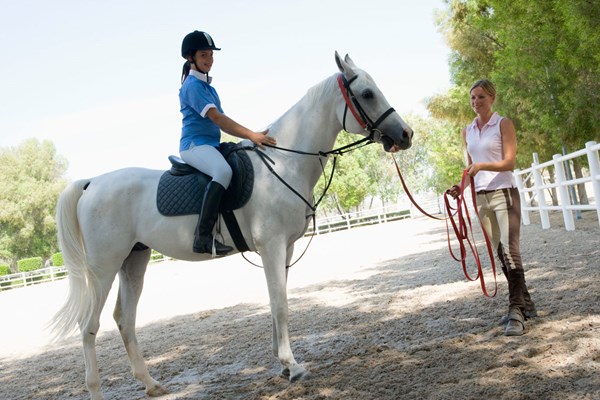 Credit: Thinkstock Horse facilities often don’t market themselves enough to gain new clients.
Credit: Thinkstock Horse facilities often don’t market themselves enough to gain new clients.Editor’s note: In May we are looking at a variety of ways for equine farms and stables to potentially earn more money. We will feature a new article weekly this month. Feel free to log into our website and add your comments below each article.
First time or new-to-horses clients are often attracted to multi-disciplinary facilities because of the diverse opportunities available. Regardless of whether they end up riding English, Western, Dressage, Saddle Seat or are simply looking for recreational riding, these customers appreciate having exposure to different styles of riding.
“In these types of facilities, I think it is important to market a great lesson program,” said Brittany L. Adams-Pope, PhD, an assistant professor in the Equine Industry Program at the University of Louisville in Kentucky.
People are always looking for places to take riding lessons. “I think most facilities do not market this enough. If people don’t know your business exists they can’t find you,” she said.
Unique Opportunities
Multi-disciplinary facilities also have the opportunity to try unique activities because their clients might be more open to trying something new.
“We became involved in horse agility after seeing how it allowed me and my horse to perform better,” said Kathy Richardson, owner of Rusty Bar Ranch in Roy, Washington.
Horse agility is a discipline and competitive event where horse and handler navigate a course of obstacles while working in-hand. Although it hasn’t taken off as quickly in the United States as it did in Europe, the horse agility events have helped Rusty Bar Ranch gain a few clients who are participating and competing in agility events.
“They are thrilled with the results they are seeing,” she added.
Business Plan
Written business plans are essential to any business, but especially to multi-disciplinary facilities. It can be tempting to follow trends, but without a plan, it’s easy to continually shift directions and scatter resources.
“We also look at the costs involved and the time investment, then ask ourselves how interested the public will be in our offering,” Richardson said.
Taking the time to consider these questions and others can provide a structure for helping stable managers and owners whether or not to move forward, put the idea on hold or to abandon the idea all together.


